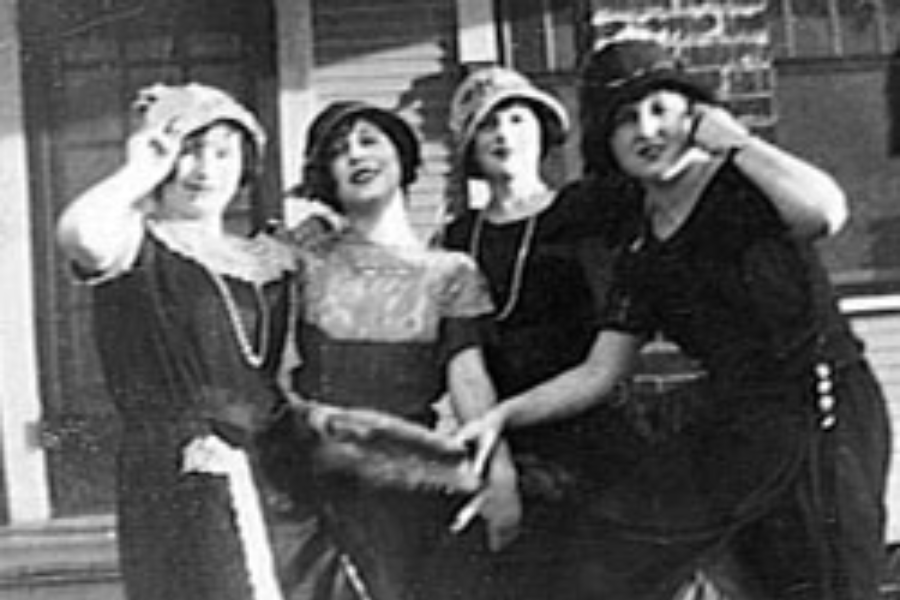Overview: The Silent Strength of a Texas Woman in the 1850s
When we imagine the 1850s in Texas, our minds often conjure up images of tough cowboys, cattle herds, and vast, untamed landscapes. Yet, what about the women who lived in these times? Often overshadowed by the men and the dramatic events of the frontier, the women of Texas were essential to the survival and prosperity of their families and communities. They were the quiet pillars of their households—managing everything from farming and homemaking to child-rearing and defending their homes in times of peril. These women, though their stories often went untold, were crucial to the development of Texas during its formative years.
So, what was it truly like for a Texas woman in the 1850s? Let’s peel back the layers of history and explore the day-to-day lives of these remarkable women—how they coped with hardships, contributed to their communities, and persevered through an era that demanded resilience.
The Hidden Struggles: A Day in the Life of a Texas Woman in the 1850s
A harsh, unforgiving frontier lifestyle characterized the 1850s in Texas. Survival was a constant battle, and women played a central role in this struggle. With many men working far from home, often on ranches or out in the fields, women managed the household and kept everything running smoothly. However, the challenges they faced were physical, emotional, and mental.
Here’s an inside look at the daily responsibilities of a Texas woman in the 1850s:
Household Duties
No modern conveniences made life easier in the 1850s. Women spent endless hours preparing meals from scratch, managing livestock, and maintaining the home. Laundry, for example, was an exhausting task that involved hand-washing clothes and boiling water for hours on end.
Parenting and Education
Large families were common, and women had to manage multiple children. Their responsibilities included educating the children, providing nourishment, and ensuring everyone’s well-being. Balancing these tasks with other household chores was a constant challenge.
Healthcare
Without access to doctors or hospitals, women became the primary caregivers for their families. They learned to rely on herbal remedies and home treatments to address illnesses and injuries, often taking on the role of a nurse or midwife.
Protection of the Homestead
At times, women were called upon to defend their homes from potential threats. Whether it was a wild animal, hostile neighbors, or even attacks from raiding parties, many Texas women were prepared to protect their families, sometimes even taking up arms if necessary.
Despite their tireless labor, these women rarely received the recognition they deserved. Their efforts were often invisible to the outside world, but their hard work kept the heart of Texas alive and strong, far from the spotlight of history.
The Curtain: A Metaphor for the Lives of Texas Women
The curtain played an intriguing symbolic role in the lives of women during the 1850s. While it may seem like a simple household item, the curtain represented much more—it was a boundary, a shield, and a reflection of the societal expectations placed on women during this time. The curtain was not just a physical barrier; it was an emblem of a woman’s place in the home, often hidden from the public eye.
A Symbol of Privacy
Unlike the vast, open terrain of Texas, the curtain in a woman’s home created a small space of privacy. It marked the division between the outside world and the personal world within the home, offering a sense of autonomy in an otherwise demanding environment.
Representation of Domestic Roles
The curtain also symbolized the domestic sphere where women were expected to confine their lives. It represented the traditional role of women in 19th-century society—detached from the outside world and focused on the tasks of homemaking and family care.
A Moment of Solitude
For many women, the area behind the curtain was one of the few places where they could find a moment of peace. After an exhausting day of work, they could retreat to this space to gather their thoughts, reflect on their lives, or simply enjoy a quiet moment to themselves.
However, while the curtain concealed the interior of the home from the external world, it also mirrored the way women’s contributions were often overlooked by society. The hard work, sacrifice, and determination of these women were largely unseen, but they were the foundation of Texas’s growth and success, shaping the state in ways that history often forgets to acknowledge.
Overcoming Adversity: The Strength of a Texas Woman in the 1850s
Living on the rugged Texas frontier in the 1850s came with countless challenges. From unpredictable weather conditions to struggles with food supply, life was an ongoing battle. But instead of simply surviving, these women faced every obstacle with determination, emerging resilient despite the odds stacked against them.
The Daily Struggles They Endured
Isolation
Many women found themselves living in remote areas, often miles away from their nearest neighbors. This physical distance meant that it was common for them to go weeks or even months without social interaction outside their immediate family. The emotional toll of such isolation was significant, making life even harder.
Unreliable Weather
Texas is notorious for its volatile climate, and women had to be prepared for any weather extremes—from blistering heat waves to sudden cold snaps. A single storm could wipe out crops, leaving families with nothing but uncertainty and the urgent need to find ways to make ends meet.
Scarcity of Resources
With limited access to stores and supplies, women had to be inventive. From crafting clothing by hand to hunting and growing their own food, these women were experts in resourcefulness. When things broke, whether it was a piece of furniture or a tool, they had to figure out how to repair or replace them without relying on outside help.
Their Resilience and Solutions
Solidarity with Neighbors
Even though they were often separated by vast distances, women relied heavily on their neighbors for support. Whether they were sharing essential resources, offering help with farm chores, or simply providing a listening ear, these women formed strong, supportive bonds whenever possible.
Faith as a Cornerstone
For many women, their spiritual beliefs offered an important source of comfort and inner strength. Religious gatherings were more than just places of worship; they functioned as communal hubs where women could find emotional support, share experiences, and draw strength from their faith.
Resourcefulness and Innovation
Practical problem-solving was essential for survival. Women in the 1850s Texas frontier often had to think creatively—whether preserving food for the winter, crafting tools from raw materials, or finding alternative ways to handle daily tasks. Their ingenuity was a key factor in overcoming the hardships they faced.
Unsung Heroes: The Vital Roles of a Texas Woman in the 1850s
While the contributions of a Texas woman in the 1850s often went uncelebrated, they were absolutely crucial to the stability and success of their families and communities. These women were the unseen forces that kept the wheels of frontier life turning.
Some of Their Lesser-Known Responsibilities
Educators
Given the distance between homes and schools, many women took on the role of teacher. They were responsible for imparting basic literacy and numeracy skills to their children, ensuring that even in isolated environments, the younger generation had access to an education.
Financial and Trade Negotiators
In a time when women had little to no legal rights, they often had to step in as negotiators for the family. Whether it was bartering goods with nearby settlers or handling household finances, these women found ways to influence decisions and ensure the well-being of their families, often without recognition or authority.
Homestead Administrators
The day-to-day management of a homestead was no small task. Texas women were the backbone of the household, overseeing everything from crop cultivation to animal husbandry. In many ways, they were the CEOs of their homes, ensuring that everything ran smoothly and that resources were maximized to keep their families thriving.
The Enduring Influence of Women in 1850s Texas
Looking back at the lives of a Texas woman in the 1850s, we are filled with admiration for their remarkable resilience. These women were far more than mere homemakers; they were trailblazers who helped shape the frontier. In an unpredictable and often harsh environment, they not only raised families but also contributed to the growth of Texas. Their legacy lives on in the stories passed down through the generations, though their lives, much like the curtain that symbolized their roles, often remain behind the scenes in history.
Certainly! Below are key facts about a Texas woman in the 1850s that are relevant to your article. These points can be woven into the narrative to provide a deeper understanding of the historical context and experiences of women in Texas during that period.
Key Facts About a Texas Woman in the 1850s
1. Primary Role as Homemakers
A Texas woman in the 1850s was primarily responsible for managing the household. This included cooking, cleaning, and caring for children. Given the lack of modern conveniences, these tasks were often time-consuming and physically demanding.
2. Contributors to the Economy
While often unseen, women in 1850s Texas played an integral role in the economic life of the state. They worked alongside men on farms and ranches, tending to livestock, growing crops, and performing other manual labor to ensure the family’s survival.
3. Isolation and Emotional Strain
Due to the vast, rural landscapes of Texas, women often lived in isolated areas far from neighbors or towns. This isolation could result in emotional strain, as social interactions were few and far between. Women relied heavily on family, faith, and rare visits from neighbors for emotional support.
4. Defenders of the Homestead
In times of conflict, women were not only caretakers of the home but also its defenders. With threats from Native American tribes, outlaws, or other settlers, many women in frontier Texas had to protect their homes and families. Some even became proficient with firearms or participated in defensive efforts.
5. Limited Legal and Social Rights
Women in Texas during the 1850s had limited legal rights. They could not vote or own property independently, and their legal status was often tied to their husbands or fathers. Despite this, they played vital roles in family decision-making and the management of their household’s resources.
6. Religious and Community Ties
Religion played a significant role in the lives of many Texas women. Churches were central to social and community life, offering not just spiritual guidance but also a space for women to connect with one another. Religious gatherings were often one of the few opportunities for women to socialize outside of the home.
Final Thoughts: Honoring the Quiet Pioneers of Texas History
The life of a Texas woman in the 1850s was filled with extraordinary challenges—obstacles that many of us today can scarcely comprehend. Yet, through sheer determination, these women overcame every adversity. Whether they were managing the household, nurturing children, or protecting their land, they were the silent forces that ensured the survival and prosperity of the Texas frontier. While their contributions often remained hidden behind the figurative curtain, their influence is undeniably woven into the very fabric of Texas’s history. As we reflect on the state’s past, let us not forget to honor the women who worked tirelessly, shaping the Lone Star State with their strength and resilience.
Frequently Asked Questions
1. What were the primary duties of women in Texas during the 1850s?
While women in 1850s Texas were primarily responsible for running the household, their roles extended much further. In addition to homemaking, they often took on responsibilities such as teaching their children, caring for the sick, managing the family farm or ranch, and, at times, defending their property from external threats.
2. How did women deal with the isolation on the frontier in Texas?
The isolation was a major challenge, but many women found ways to cope. Their faith provided a strong foundation, and family bonds were crucial for emotional support. Visits from neighbors, though infrequent, were cherished moments. Additionally, the daily tasks they managed gave them a sense of purpose and helped them stay connected to their role in ensuring the survival of their families.
3. What does the “curtain” represent in the context of these women’s lives?
The “curtain” serves as a metaphor for the boundary between the public and private spheres of women’s lives. It symbolizes how women’s hard work and contributions were often invisible to the outside world, despite being essential to the functioning and success of their families and communities. It also reflects the social expectations that confined them to domestic roles, out of view but not without immense influence.
Stay in touch to get more news & updates on Get Break News











